I have a dream, and it is all about dogwoods. It's a dream of building a gallery of dogwoods, a place you can walk and meanwhile drown in their white blossoms.
I always gave Bill all the credit for having the vision and chasing it down to make it real, but I have vision, too. This vision, this dream, has crept up on me in the last few years. As many dreams do, it started with what I didn't want. And what I didn't want was a mess, a horrible overgrown orchard barricaded by dozens of fallen trees, nothing anyone could stroll through or take joy in. That's what I had in 2018, when a derecho wrecked the place (which wasn't very nice to start with).
The orchard had fallen into great neglect. It had fallen in on itself and exotics had taken over, as they will when you turn your back for a couple decades. Everything took precedence over cleaning it up, and we didn't really notice the inroads the rose and honeysuckle had made until it was too late to do anything about it. It was overwhelming. And once the trees came down, the overgrowth went wild, and you couldn't get a tractor through to even cut the paths. That wasn't my dream. That was my nightmare.
I set about rectifying that in the winter of 2019. I hired a small team of Amish chainsaw artisans, who rented a Bobcat, and they made it possible to get through the paths, to see where my vision could lead me.
In this panorama, you can see a brushpile, backed by blooming dogwoods. This is my backyard. This is the second such pile I have built since fall of 2020. I burned one, and it went up with a roar that lasted all day and into the night. And then I made another that's even bigger. The first pile I made with hand pruners. It was very hard won. This second pile I made with a chainsaw. It was hard-won, too, but my hands and arms feel a lot better this time. There is another massive pile twice its size up on the east hill. Some of that one was made with a bulldozer. Both will be burned soon.
I owe what you're about to see to these piles of brush, to the grit and utterly driven fervor that have possessed me to clean this place up. I had to uncover the dogwoods.
I had to dig these floating white butterflies out of walls and mountains of horrible multiflora, to take the jabs and hooks to my arms and legs, neck and torso. I got a thorn in my scalp today. That was cool. Truly, you couldn't even see the form of these two dogwoods for thorns and vines. I was sick of it, sick of staring at drowning trees, wondering what they might look like under all that overgrowth.
This is what they look like. Having been buried, they were forced to make incredible outward growth, as they strove to reach past the tangle and toward the sun. And stripping all that junk away leaves these impossibly graceful cantilevered limbs. I love them desperately, all the more because they tell a story of having been imprisoned, and now living free. Every dogwood in this place has deep spiral scars on its trunk and limbs, from the honeysuckle that strangled it. These dogwoods have wabi-sabi. They're grateful survivors, and they are past worrying about cosmetics. They're just glad to be alive.
Their blossoms look like cabbage white butterflies, floating on the breeze. No visible means of support. Just flying.
The first tree I freed was the one I call The Dogwood God. It deserved to have the vines and thorny canes cut off it first. The Dogwood God is so huge and old it is impossible to photograph well. You have to be in its presence to appreciate it.
It's so tall that its flowers float high above, and you can't really appreciate them from the ground!
But I do, I do.
Curtis is slipping through a patch of spring sun here, and you can see how big the tree is relative to him.
It's down at the far end of the old orchard, where the paths are wide and the maples are dominant. I love that part.
I keep on photographing this tree, trying to capture its majesty. It really helps to have a dog for scale. It really helps to have a dog at all.
It's the tree's spread that makes it so special. I remember noticing it when we bought the place back in 1992, and remarking on how long its branches were. But somehow I didn't revere it the way I do now. Things like old trees get more precious the older one gets.
There's that reach, that spread I was telling you about.
Before it rotted and fell off, it had a low branch that was even longer than this one. It was ridiculous.
Dogwoods aren't normally very large trees. Most of the trees I love are on the small, gracile side. I thought birches were my favorite tree until I became obsessed with freeing dogwoods.
Now, when I walk through the orchard, I assess it all in relation to the dogwoods. What compliments them, and what detracts? I remove that which detracts, and it is always something invasive. I removed a huge Russian olive here, and the sinuous dance of the happy dogwoods thus revealed was a sight to behold. I've made several such openings, little dogwood groves, in the orchard rows.
And so I've come to know this place, by carving it out tree by tree. There are still messes, but they are fewer and farther between now, and they are shrinking. The native beauty that has been buried for years upon years is emerging. Beauty is winning.
I'm writing this hanging in my Air Chair by the greenhouse. The purple Moonstruck petunia is pumping out its evening fragrance, trolling for moths. I note with some amusement that it smells just like the Russian olives, which I sniff out and saw down as fast as I find them. I spray their cut stumps and order them to stay dead, but it rarely works.
Last night, I got up in the wee hours and went to the back patio slider to look out at the almost full moon as it sank toward the west. The moonlight on the bank of white dogwoods almost brought me to my knees. I think that was the first time I'd really seen dogwoods in strong moonlight. God, it was like drinking a glass of brandy all in one gulp. And if that weren't enough, there was a big doe nibbling at the fresh-cut stuff on the brushpile, and she leapt sideways when she saw me at the window, disappearing under one of those banks of white moon blossoms. Honestly, it was all enough without a large mammal levitating sideways.

Tonight I'm going to try to stay up late enough to take a moonlit walk through the orchard, with no flashlight. The glowing dogwoods will show me the paths. A barred owl is hooting down in Orchid Holler, as if cheering me on. Oh, now the whip-poor-will has started singing! It's flown so close I can hear the hollow cluck it makes right after the "will!" Spring is just too sweet and beautiful! Still, even with a singing whip and moonlight on dogwood flowers, it's hard to stay awake very long when you've been cutting and hauling brush all day.
I have more photos of the dogwoods in full bloom, but I figure you're overloaded by now. Next post. And the coyotes begin to wail. It's a good spring night on Indigo Hill.























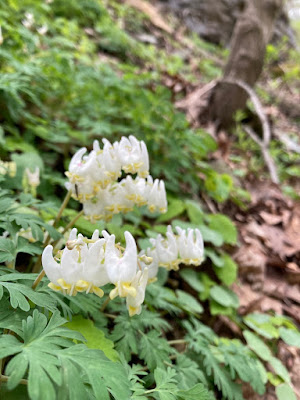









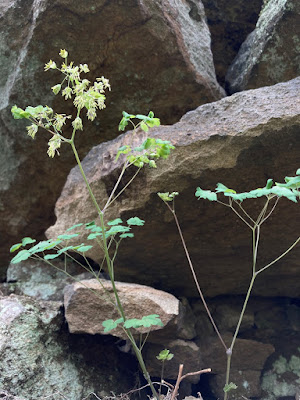


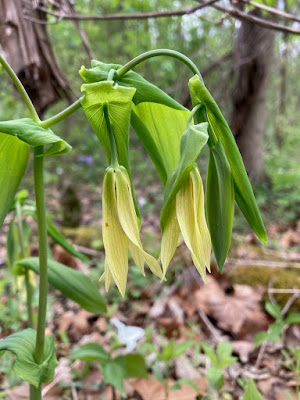






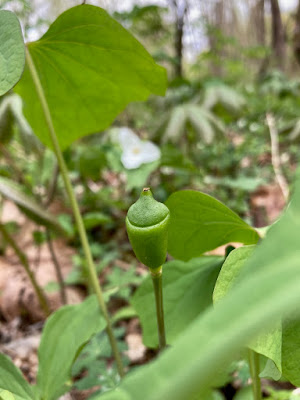






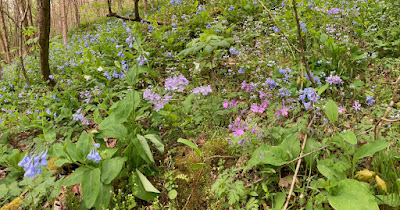








Monday, April 26, 2021
13 comments